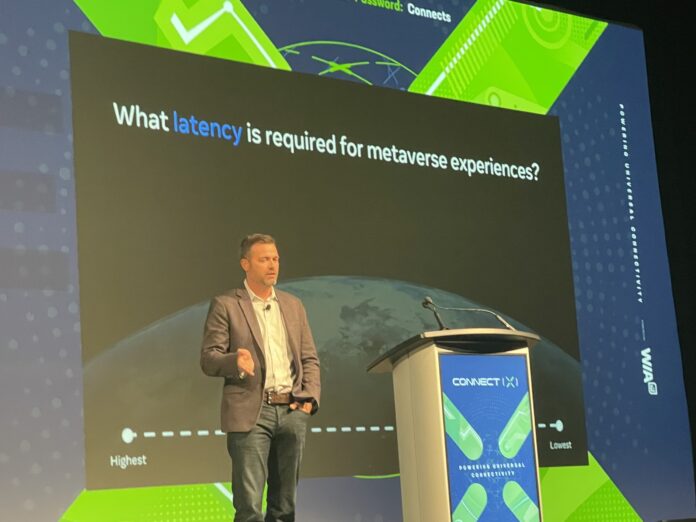No one person is going to build the metaverse, the Meta exec said at last week’s Connect EXPO
At the recent Connect EXPO in Denver, Meta Director of Engineering Dan Rampton emphasized the need for collaboration in making the metaverse a reality, explaining that the latency necessary for these virtual experiences will require more infrastructure and advanced technologies.
“The truth is that we will have many companies developing for the metaverse. There won’t just be one metaverse; this will be a collaboration across companies and experiences […] that will make this happen,” he said, adding that if 5G and Wi-Fi 6 and 7 don’t meet their single-digit latency promises, most of the metaverse experiences simply won’t be possible.
According to Rampton, users can perceive 150 milliseconds of lag in the case of audio experiences, with video falling between 150 and 200 milliseconds. “People start interacting with those products differently at that point… Engagement goes down,” he continued.
Further, for applications like cloud gaming and VR work rooms, which require hand gesturing and fast interactions, you’re looking at 50 milliseconds. And for those applications intended for the metaverse? Rampton said the target is 25 milliseconds.
While getting 25 milliseconds from a regular connection is doable, it becomes a significant challenge in multi-person interactions, which is what the majority of metaverse experiences will be. For experiences like Meta’s fast twitch ping-pong game, the latency involved is often doubled.
Rampton said that Meta, though excited about the prospect of MEC, doesn’t see this as the solution here. “The crux of the problem here is it’s connected with two users. You might really get a great connection at home with 10 milliseconds, but actually it’s 20 minutes to try to play these games. You’d still traverse the entire network to get there,” he said.
Pulling up a map of North America, Rampton explained that in the U.S. there are approximately 15, if not fewer, interconnection points where every major network operator is accessible, a figure he called “startling.”
“That is how not ubiquitous our network-to-network-to-network-to-network connectivity is in the United States,” he continued. To solve the existing latency challenges and to ensure that future, immersive applications are possible, it is imperative to grow the network ecosystem by investing in neutral colocation facilities like servers and GPUs. “Pretty soon we’re talking about something in every state, if not multiple in every metro area,” Rampton said.
This future, he concluded, must be built collaboratively with all major network and fiber operators and colocation facilities working towards the same goal. “No one person built the internet,” he said, “No one person is going to build this set of infrastructure or control it. I think to actually make the catalyst happen, we probably need to lock arms as an industry and decide that this is a good idea and work toward something together.”

